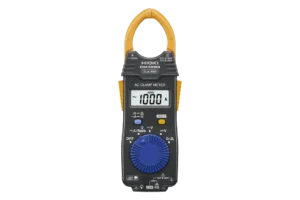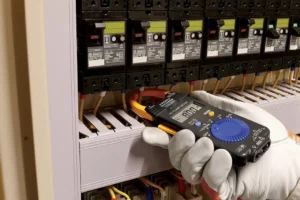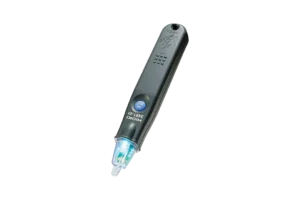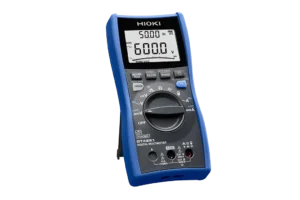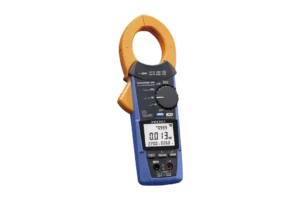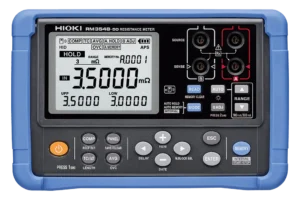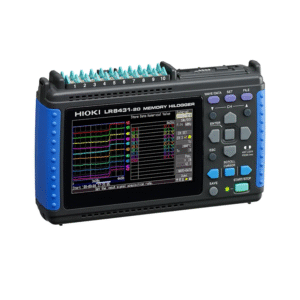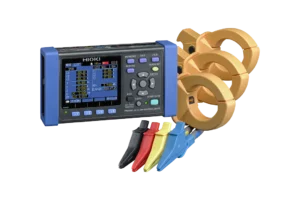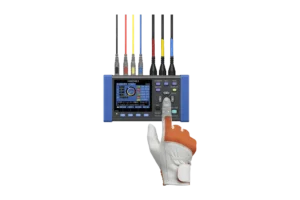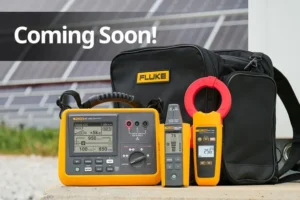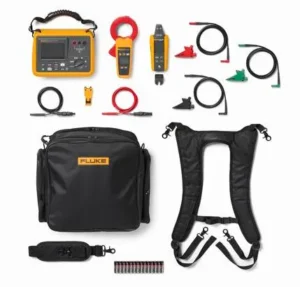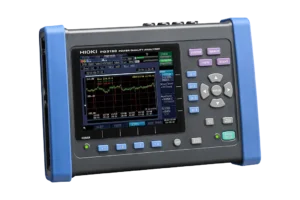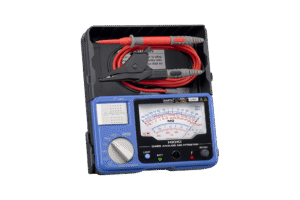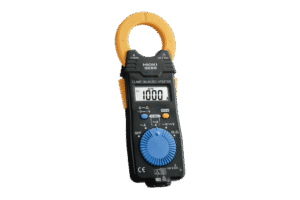The Challenge: Measuring Current in Cramped Electrical Enclosures
Every sparky knows the frustration – you’re staring at a packed switchboard with wires bundled tight, barely enough room to get your fingers in, let alone a bulky clamp meter. Standard testers simply won’t fit between closely-spaced conductors or around cables crammed against the back of the panel. You need accurate current readings to diagnose circuit loading, verify installation work, or troubleshoot faults, but your gear physically can’t access the measurement point.
This problem becomes critical when you’re working with modern installations featuring VFDs, inverters, and switch-mode power supplies. These non-linear loads create harmonic distortion that throws off basic averaging meters, giving you misleading readings that can result in undersized cables, nuisance tripping, or failed compliance testing. You need a meter that’s both physically compact enough to access tight spaces and technically sophisticated enough to measure accurately in today’s power quality environment.
Built for Access: The Slimmest Profile That Doesn’t Sacrifice Performance
The CM3289 solves the access problem with a redesigned sensor profile that’s significantly thinner than previous models whilst maintaining the full measurement capability you’d expect from HIOKI’s professional range. At just 16mm thick, this meter slips into gaps that would stop conventional clamp testers dead. The 33mm jaw diameter handles standard building wiring and distribution cables, whilst the slim form factor means you can actually get around conductors in densely-packed boards.
What sets this meter apart from cheap card testers is the True RMS measurement engine. When you’re checking current draw on equipment with inverter drives, LED lighting ballasts, or any load with a non-sinusoidal waveform, True RMS calculation gives you the actual heating effect current – not the artificially low reading you’d get from an average-responding meter. This accuracy matters when you’re sizing circuit protection, calculating voltage drop, or documenting compliance for sign-off.
The meter handles crest factors up to 2.5 at 2500A, which covers the inrush characteristics of motors, transformers, and capacitive loads without clipping or false readings. You’re measuring reality, not a filtered approximation.
Genuine Job Site Durability: Not Another Delicate Pocket Tool
Many compact meters compromise on ruggedness to achieve their small size. The CM3289 takes the opposite approach – it’s engineered to survive the knocks and temperature extremes of real electrical work. The meter’s rated for drops from 1 metre onto concrete, which means it’ll handle the inevitable tumble out of your shirt pocket or off the top of a ladder. The -25°C to 65°C operating range covers everything from cool room work and refrigeration fault-finding through to switchboard testing on 40-degree summer days in un-airconditioned plant rooms.
CAT IV 300V and CAT III 600V current measurement ratings, plus CAT III 300V voltage measurement, give you the safety margins required for work at the origin of supply and distribution boards. These aren’t marketing numbers – they’re IEC-certified protection levels that define the transient overvoltage protection built into the meter’s input circuitry.
The coin cell battery provides 70 hours of continuous operation, and spares are available from any servo, so you’re never stuck on a job with a flat meter. Auto power-save extends battery life further by shutting down after 15 minutes of inactivity.
When Standard Clamps Won’t Reach: Flexible Sensor Option
Some installations defeat even the slimmest jaw clamp – think paired cables feeding large loads, bundles of paralleled conductors in distribution boards, or bus bars in tight enclosures. For these situations, the CM3289 accepts the optional CT6280 flexible current sensor, which extends your measurement capability to 4199A and allows you to loop around cable groupings or irregularly-shaped conductors.
The flexible sensor’s 130mm opening diameter handles thick cables and multiple conductors, whilst the Rogowski coil design means you simply loop it around the load and clip the ends together – no need to disconnect or physically fit through a rigid jaw. This is particularly valuable for retrofit monitoring work in existing installations where you can’t easily isolate circuits.
Complete Electrical Testing in One Compact Package
Beyond clamp current measurement, the CM3289 provides the full suite of electrical testing functions you need on every job:
DC Voltage Measurement: 600V range with ±1.0% accuracy for battery systems, solar strings, control circuits, and DC distribution. The 420mV lowest range gives you precision for small signal work and voltage drop testing.
AC Voltage Measurement: True RMS AC voltage to 600V, accurately reading distorted waveforms from inverters, UPS systems, and harmonic-laden loads. 45-500Hz frequency range covers standard power and higher-frequency switching supplies.
Resistance Measurement: Six ranges from 420Ω to 42MΩ let you test circuit continuity, conductor integrity, earth bonds, and insulation resistance (for basic checks – you’ll still need a proper insulation tester for AS/NZS 3000 compliance verification).
Continuity Testing: Audible buzzer at 50Ω or less provides hands-free confirmation of good connections, earthing, and circuit integrity without needing to look at the display.
Data Hold Function: Freeze the reading on screen so you can record results in cramped positions where you can’t see the meter whilst taking the measurement.
This all-in-one capability means you carry one tool instead of multiple meters, saving pocket space and reducing the chance you’ll turn up to a job missing the tester you need.
Real-World Applications Across Electrical Trades
Residential and Commercial Contractors: Verify circuit loading during renovations and additions, check appliance current draw for compliance documentation, troubleshoot tripping circuits, confirm balanced loading on three-phase distribution boards. The compact size means you can take readings in consumer units without removing the board or disturbing adjacent circuitry.
Industrial Maintenance: Monitor motor current for bearing wear detection and overload diagnosis, verify VFD output current, check three-phase balance on production equipment, measure current draw during equipment commissioning. The True RMS function is essential for inverter-fed motors where average meters give misleading results.
Solar Installation: Measure DC string current to verify array performance and detect partial shading or failed panels, check inverter output current against nameplate ratings, verify current balance across multiple MPPT inputs. The wide operating temperature range handles rooftop work year-round.
HVAC Technicians: Check compressor current draw to detect refrigerant issues or mechanical problems, verify fan motor operation, measure control transformer loading, diagnose starting circuit faults. The flexible sensor option is ideal for getting around compressor wiring in tight equipment enclosures.
Apprentices and Trainers: The meter’s combination of professional accuracy, safety ratings, and straightforward operation makes it ideal for teaching proper electrical measurement technique. The clear display and data hold function help apprentices learn to interpret readings correctly.



